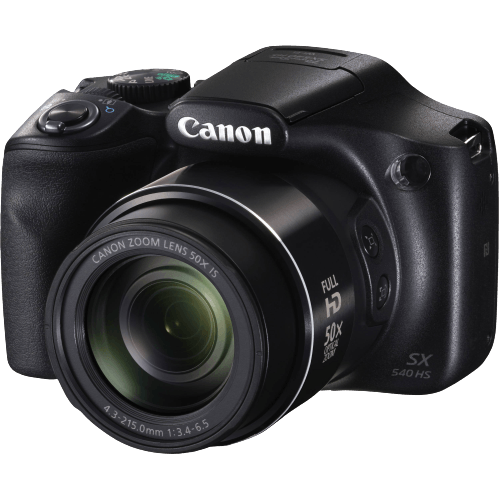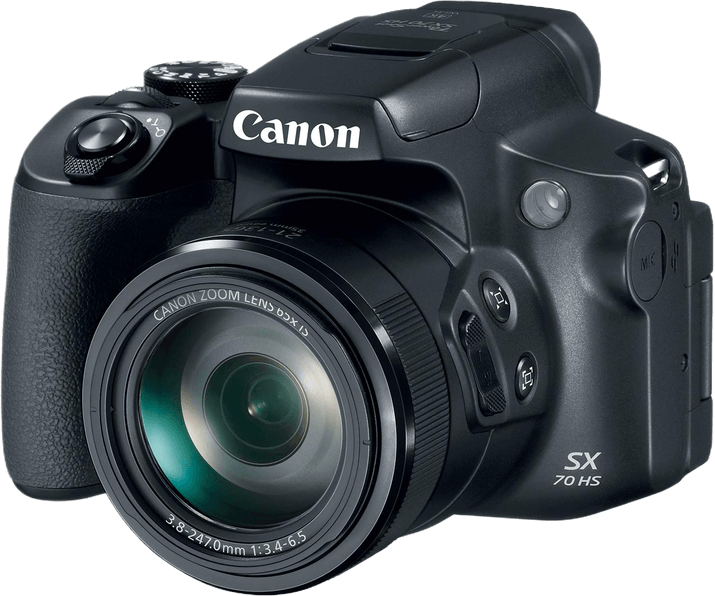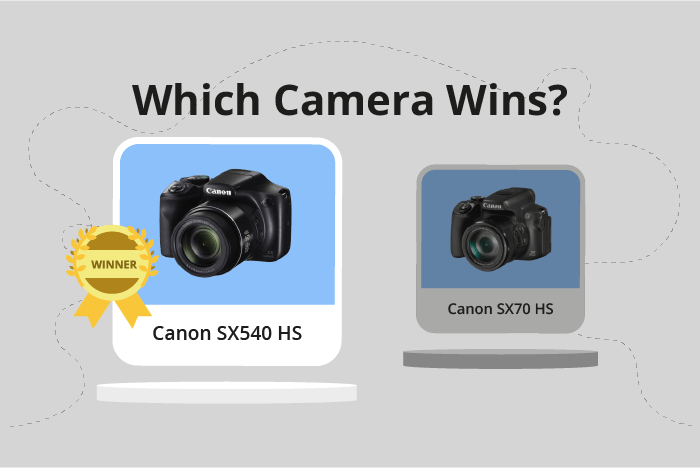Canon PowerShot SX540 HS vs PowerShot SX70 HS Comparison
Canon PowerShot SX540 HS

Canon PowerShot SX70 HS

The Canon PowerShot SX540 HS comes out as the winner with a score of 52/100, while the Canon PowerShot SX70 HS trails behind with a score of 48. Both cameras are bridge type and share a similar launch price. The cameras also have comparable sizes, with the SX540 HS measuring 120 x 82 x 92mm and the SX70 HS at 127 x 91 x 117mm.
The winning SX540 HS is better due to its lighter weight of 442g, making it more portable and convenient for users. On the other hand, the SX70 HS has a more recent release year of 2018, providing it with potentially updated technology and features compared to the SX540 HS, which was released in 2016.
Taking all factors into account, the Canon PowerShot SX540 HS wins for its higher score, lighter weight, and lower price. However, the Canon PowerShot SX70 HS remains a viable option for those seeking a more recent model with potential advancements in technology.
Canon PowerShot SX540 HS vs PowerShot SX70 HS Overview and Optics
The Canon PowerShot SX540 HS edges out the Canon PowerShot SX70 HS in our optics comparison with a score of 51/100, while the SX70 HS achieves a score of 49/100. Both cameras share some common specifications, including 20 megapixels, CMOS sensor type, 1/2.3″ sensor size, and a fixed lens mount, which means the lenses cannot be changed.
The SX540 HS has a few advantages over the SX70 HS. It features a DIGIC 6 processor, image stabilization, and a 4:3 aspect ratio. The image stabilization contributes to better image quality in various shooting conditions, particularly in low light or when capturing fast-moving subjects. Its 4:3 aspect ratio is also more versatile for different types of photography.
On the other hand, the SX70 HS has a higher shooting speed of 10 compared to the SX540 HS’s 5.9, which may make it more suitable for capturing fast action scenes. Additionally, it has a more powerful Digic 8 processor and a higher DXOMARK score for the sensor at 58, indicating better overall image quality. However, the SX70 HS lacks image stabilization and has a 3:2 aspect ratio, which may be limiting for some photographers.
To sum up, the Canon PowerShot SX540 HS wins the optics comparison by a narrow margin, thanks to its image stabilization and versatile aspect ratio. However, the Canon PowerShot SX70 HS offers a faster shooting speed and better overall image quality with its more powerful processor and higher sensor score. Both cameras have their strengths and weaknesses, and the choice between them ultimately depends on the specific needs and preferences of the photographer.
Canon PowerShot SX540 HS vs PowerShot SX70 HS Video Performance
The Canon PowerShot SX70 HS outperforms the Canon PowerShot SX540 HS in video capabilities, scoring 91 out of 100, compared to the SX540 HS’s score of 56. Both cameras share some common video features, but the SX70 HS offers significant advantages in certain areas.
Both the SX540 HS and SX70 HS provide Full HD video resolution, with maximum dimensions of 1920 x 1080. However, the SX70 HS goes a step further, offering 4K video resolution and maximum dimensions of 3840 x 2160. This higher resolution results in sharper, more detailed video footage.
Another notable difference is the maximum video frame rate. The SX540 HS has a maximum frame rate of 60fps, while the SX70 HS doubles that number, reaching up to 120fps. This higher frame rate allows for smoother video playback and greater flexibility in post-production, such as the ability to create slow-motion footage.
The SX70 HS also includes built-in time-lapse functionality, which the SX540 HS lacks. This feature enables users to create stunning time-lapse videos without the need for additional equipment or software.
The SX540 HS does not have any specific advantages in video capabilities over the SX70 HS. Its lower score reflects its inferior performance in this area.
Based on these differences, the Canon PowerShot SX70 HS is the clear winner in terms of video capabilities. Its 4K resolution, higher frame rate, and built-in time-lapse functionality make it a more versatile and capable camera for capturing high-quality video. The Canon PowerShot SX540 HS, while still providing Full HD video, falls short in comparison to the superior performance of the SX70 HS.
Canon PowerShot SX540 HS vs PowerShot SX70 HS Features and Benefits
The Canon PowerShot SX540 HS and SX70 HS scores closely on features. Both cameras have a 3-inch screen, no GPS, and offer Wi-Fi and Bluetooth connectivity. The SX540 HS benefits from a higher screen resolution of 461,000 dots, compared to the SX70 HS’s 922,000 dots. This difference leads to a clearer and more detailed display on the SX540 HS, making it easier to compose and review images.
Canon PowerShot SX540 HS vs PowerShot SX70 HS Storage and Battery
The Canon PowerShot SX70 HS outperforms the Canon PowerShot SX540 HS in storage and battery with a score of 21/100 compared to the latter’s 13/100. Both cameras have a single memory card slot and accept SD, SDHC, and SDXC cards. Neither camera offers USB charging.
The SX70 HS has a clear advantage in battery life, providing 325 shots per charge, while the SX540 HS falls short with only 205 shots. This difference in battery life makes the SX70 HS a more reliable choice for extended shooting sessions. The SX540 HS, on the other hand, does not offer any notable benefits in storage and battery when compared to the SX70 HS.
Considering the significant difference in battery life, the Canon PowerShot SX70 HS proves to be the superior choice in terms of storage and battery performance. The Canon PowerShot SX540 HS, while still a capable camera, falls behind in this specific aspect.
Canon PowerShot SX540 HS vs PowerShot SX70 HS – Our Verdict
Are you still undecided about which camera is right for you? Have a look at these popular comparisons that feature the Canon PowerShot SX540 HS or the Canon PowerShot SX70 HS:
- Canon PowerShot SX540 HS vs Nikon Coolpix B500
- Canon PowerShot SX70 HS vs Panasonic Lumix DMC-FZ2000 / FZ2500
- Canon PowerShot SX70 HS vs Nikon Coolpix B500
- Canon PowerShot SX70 HS vs Panasonic Lumix FZ80 / FZ82
- Canon PowerShot SX70 HS vs PowerShot SX740 HS
- Canon EOS Rebel T7 / 2000D vs PowerShot SX540 HS

